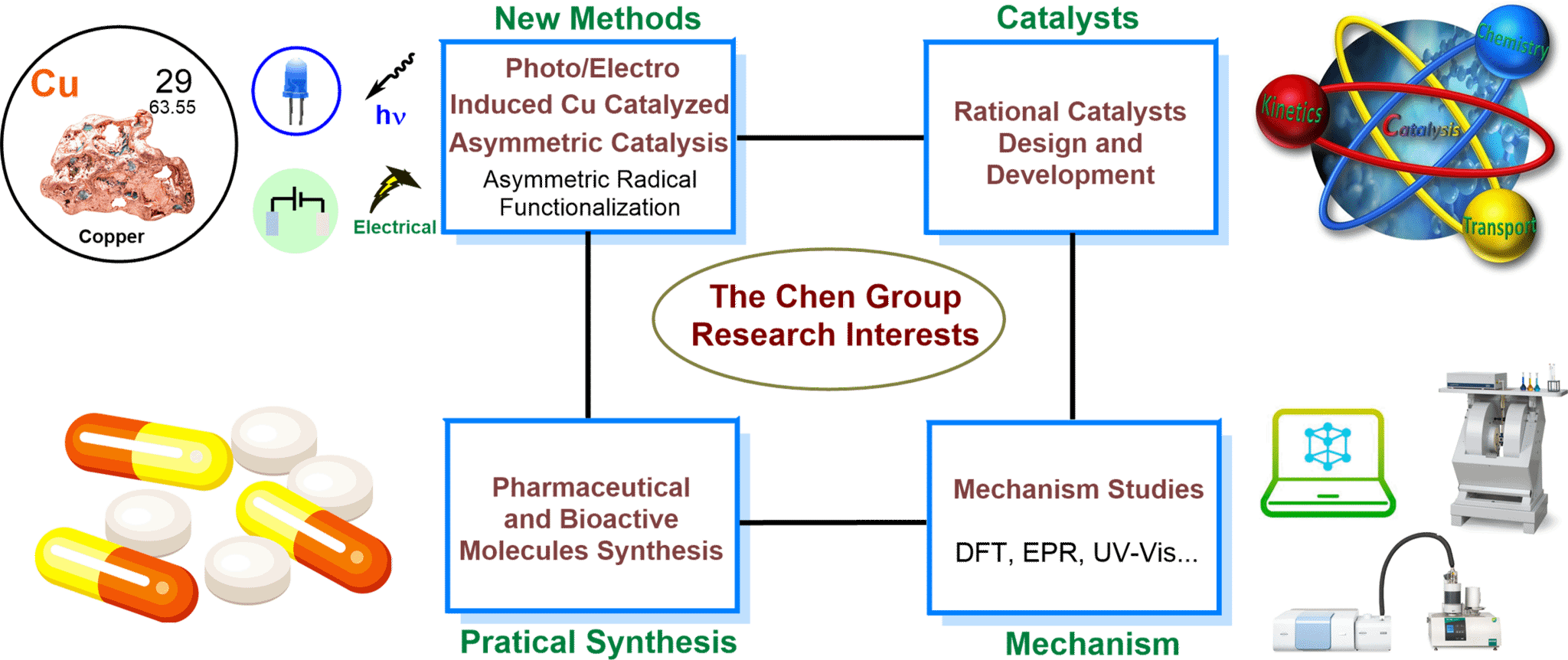Photo-Induced and Electrochemical Cu-Catalyzed Asymmetric Radical Catalysis
In recent years, photo-induced and electrochemical catalysis have come to the forefront as innovative and powerful strategies for organic synthesis. Both approaches, either using light irradiation or electricity as driving force, are able to engage in single-electron transfer with organic substrates, and thus generate the open shelled intermediates, which can participate in low energy transformations complimentary to traditional high energy thermal two-electron approaches. Meanwhile, Cu catalysis have gained renaissance recently, due to the versatile roles of Cu catalysts including exhibiting highly tunable redox properties (excited states), accommodating various types of binding ligands, allowing exquisite stereocontrol, and offering multiple oxidation states that are able to well capture radical intermediates and facilitate reductive eliminations for challenging bond formations. The Chen group is focusing on photo-induced and electrochemical Cu-catalyzed asymmetric radical catalysis, with an emphasis on novel catalyst development directed asymmetric transformations. We are aimed at developing efficient transformations with a goal of synthesizing pharmaceutical and bioactive molecules. Our research interests also include the in-depth investigations of the reaction mechanisms via DFT calculation, EPR, kinetics, UV-Vis, CV, time resolved spectroscopy, et al.
